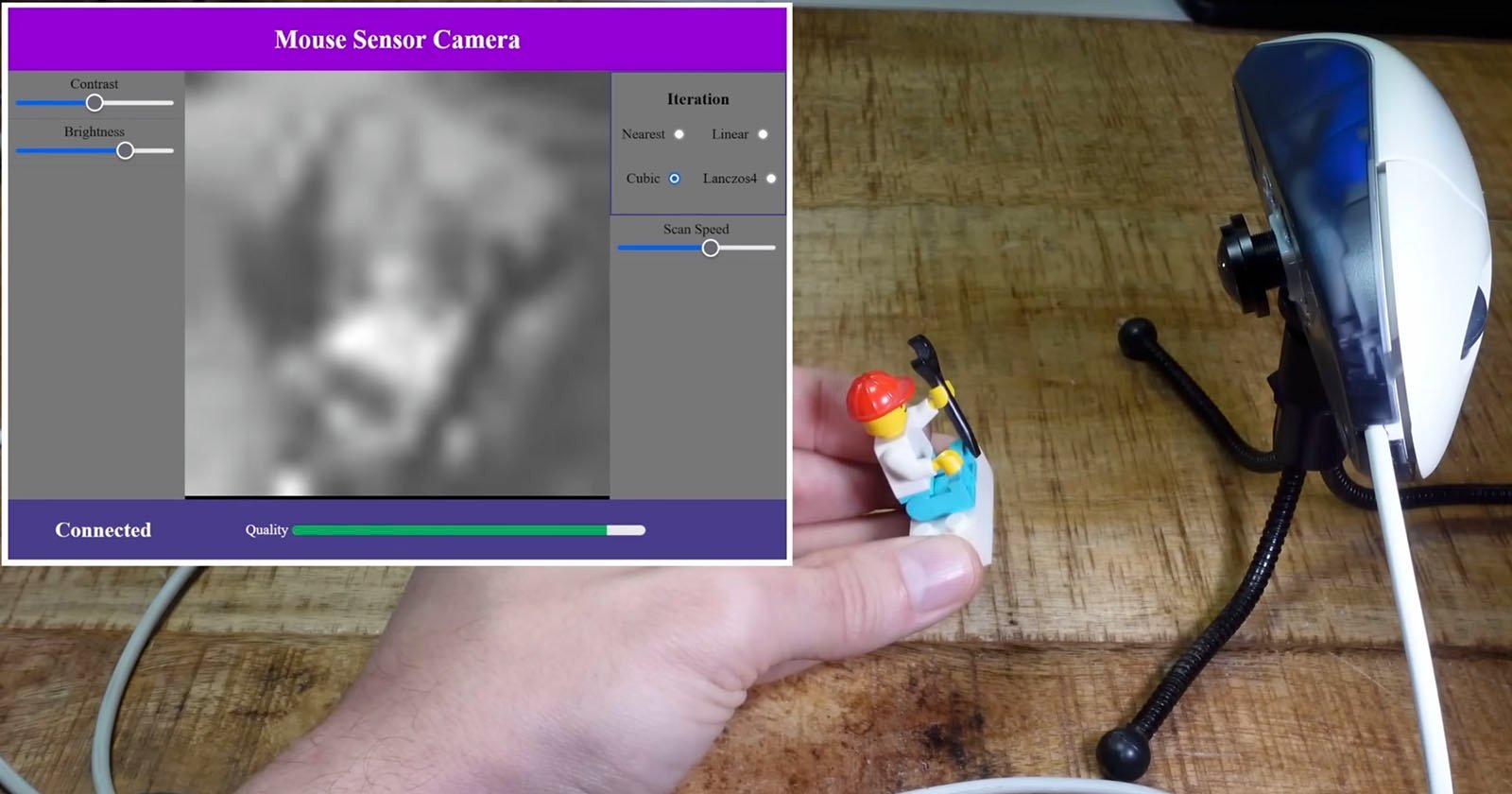
A clever engineer has turned a computer mouse into a working camera. The fun DIY project may not deliver impeccable image quality, but it’s a great way to repurpose an old mouse.
Many computer mice are optical, meaning that they accurately detect movement through a combination of a photoelectric cell and an LED. The light bounces off the user’s mousepad or desk and into the photocell. In front of the photocell is a lens that helps direct the reflected light. As the user moves the mouse, the way that light reflects changes in response, and this is translated into different movement values for the cursor.
While most people are happy to accept that a mouse simply works and call it a day, opting not to think about the photocell and light at all. YouTube creator Doctor Volt is not one of these individuals, instead finding himself determined to turn a mouse into a full-blown camera.
In Doctor Volt’s case, he opted to dissect and convert a Logitech mouse into a camera. The mouse of choice sports an ADNS-2610 optical sensor, which is a compact entry-level sensor.
It is extremely tiny and has an 18 x 18 area of photodiodes. Thinking about these photodiodes instead as pixels helps illustrate the resolution at hand. There are only 324 pixels on the mouse sensor. A single megapixel is 1,000,000 pixels.
Through clever hardware and software engineering, Doctor Volt devised a wireless streaming setup from the camera to his computer. However, the scan rate is quite slow, so it isn’t exactly a live-streaming setup or even a proper video camera.
Over at Hackaday, Jenny List, the creator of a 3D-printed Single-8 film cartridge, recommends using a gaming mouse to achieve a higher resolution.
“The pictures have something of the Game Boy camera about them, being low-res and monochrome, but it’s still a neat hack,” List writes.
Doctor Volt has shared the necessary code to hack the mouse into a camera on Github. The project requires a Waveshare ESP32 S3 Mini module, a Raspberry Pi wide angle camera lens or similar, a lens adapter, and Microsoft Code with PlatformIO extension.
More of Doctor Volt’s projects are available on YouTube, including an incredible mechanical camera project using an old musical record.
Image credits: Doctor Volt




